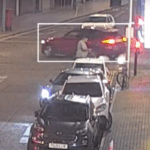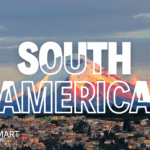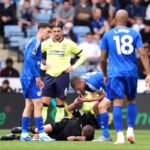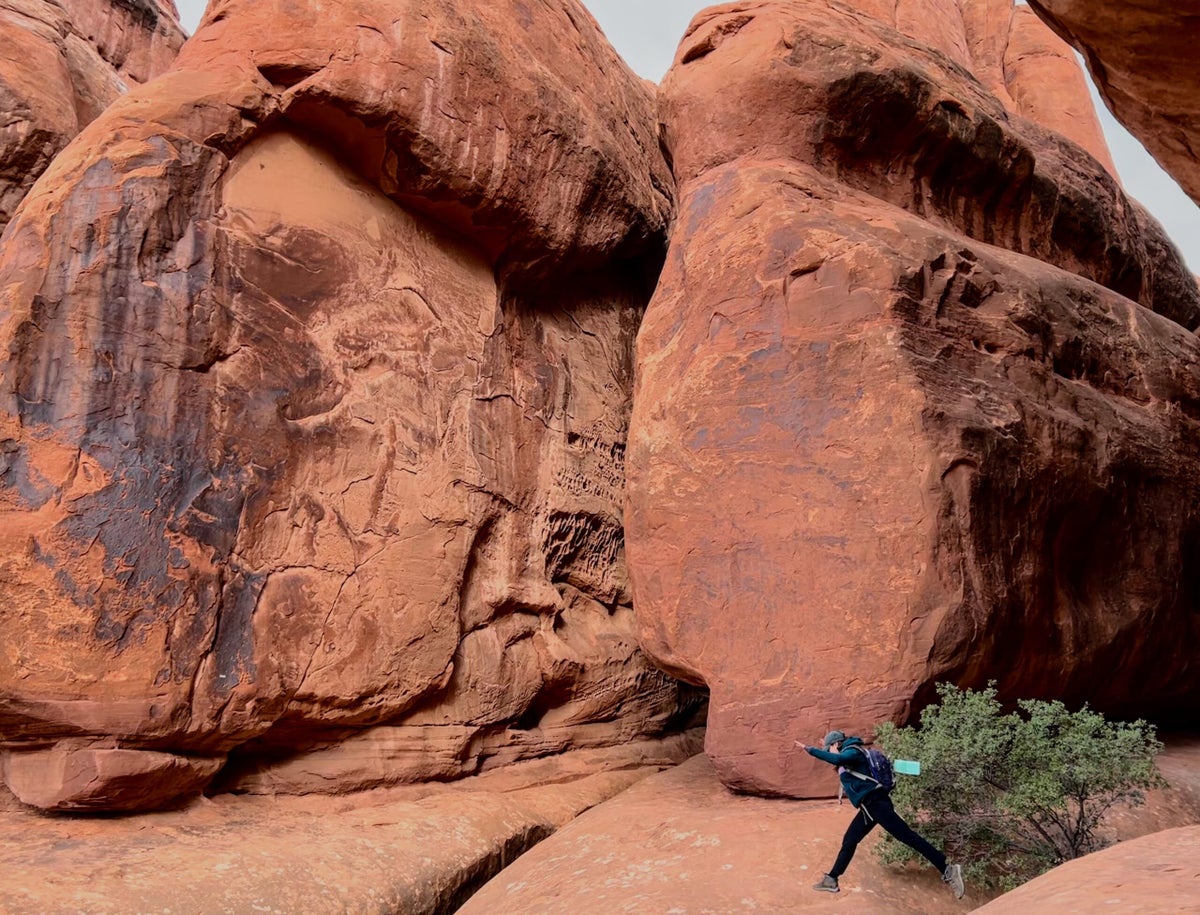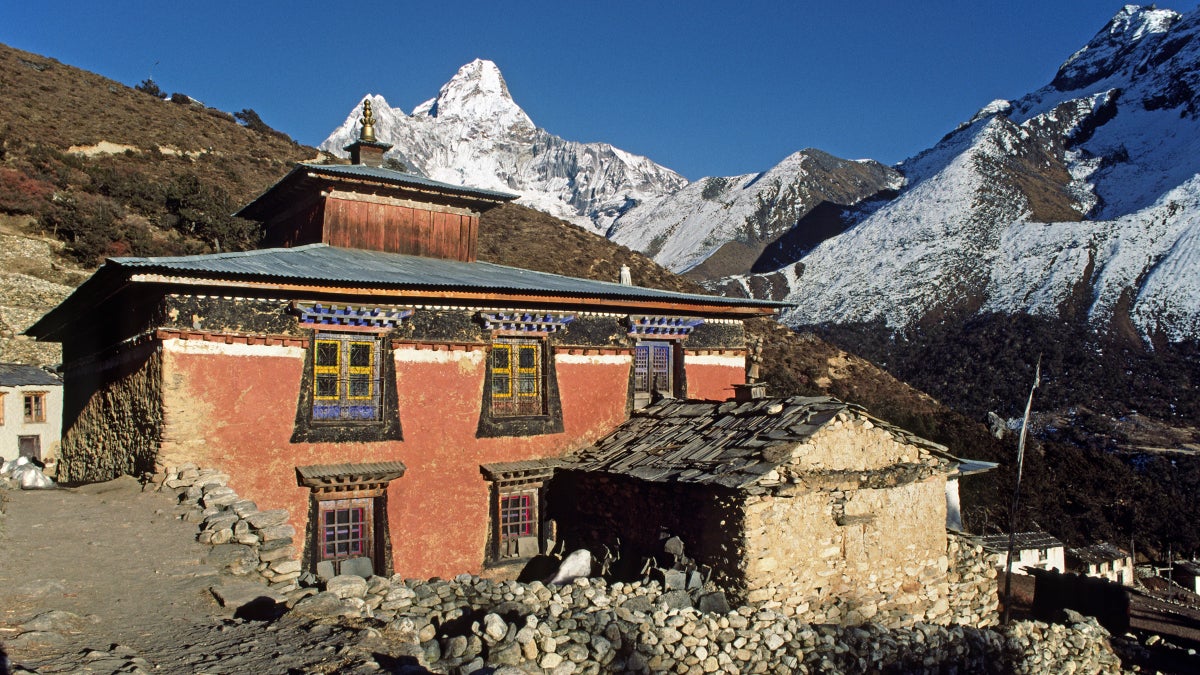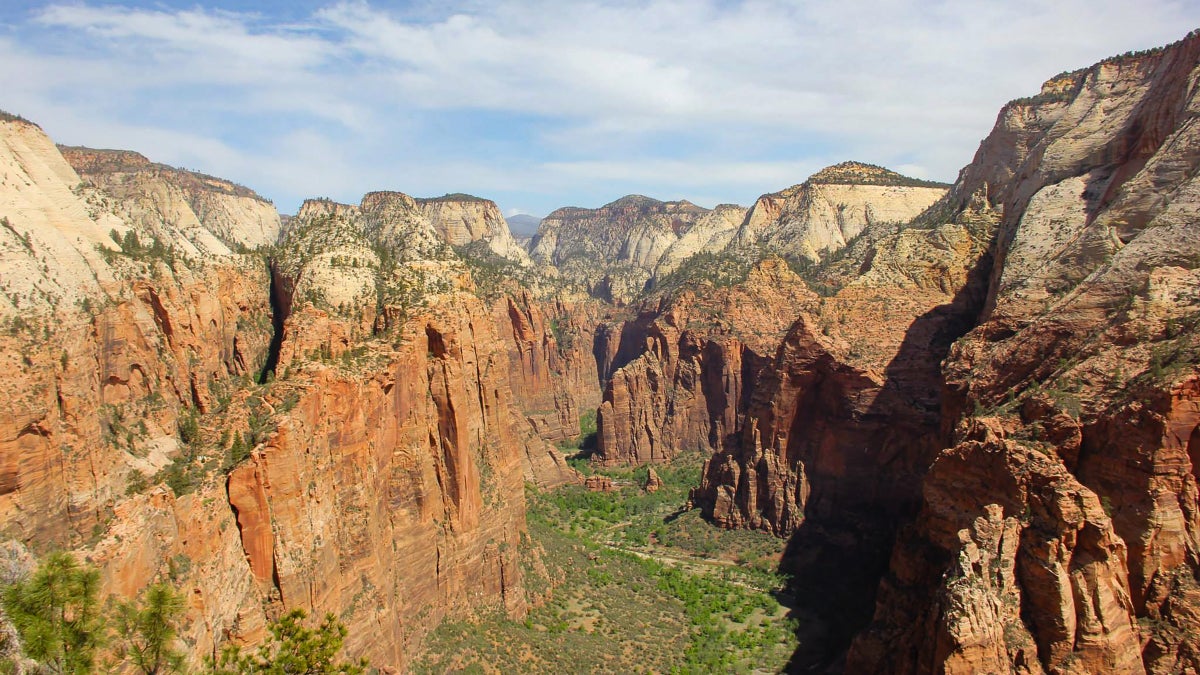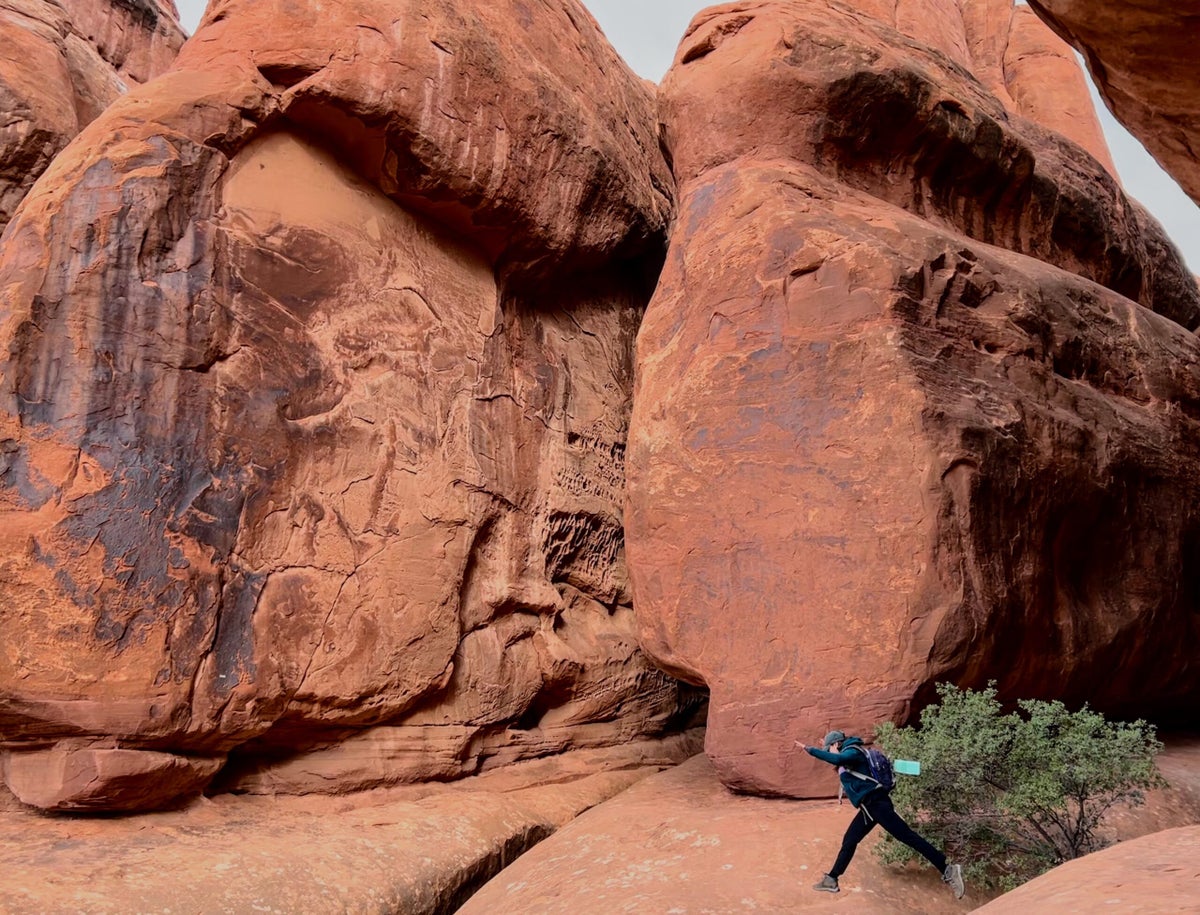
Dreams of exploring Utah’s spectacular red rock country quickly turn dystopic if you do it wrong. The tourist traps which you can easily fall into are as myriad as arches in Utah’s second most popular national park.
Blame our state’s overwhelmingly successful “Mighty Five” campaign, launched in 2013, which aimed to bring more visitors to Utah’s five national parks: Zion, Bryce, Capitol Reef, Canyonlands, and Arches (from west to east). These days, the so-called Mighty Five are among the nation’s most visited. They are so visited that during peak season (generally April through October), Arches imposes a time-entry reservation system. Zion requires everyone to ride the shuttle through its main canyon. And park campsite and lodging reservations fill up faster than a slot canyon in a downpour.
That said, the last thing that I’d recommend—as a Utahn of nine years and local guidebook author—is to not realize your dreams of beholding Delicate Arch, hiking the Narrows, or wandering amid Bryce’s anthropomorphic sandstone spires known as hoodoos. The sights are so worth the hype, which is why I’ve put together some strategies for dodging crowds at these attractions. But for every iconic formation or hike, there are also hundreds more to explore across Utah’s 22.8 million acres of public lands, often in spots off the average tourist’s radar.
Avoiding scenic drive traffic jams, crowded trails, and Disneyland-esque vibes does require some work. You’ll usually need to plan in advance, put in extra effort, and exert yourself more than the average national park-goer. But I promise you it will be worth it.
A note for our current times: While this advice is designed to help you escape the crowds, keep in mind that crowding may be even more challenging this season—and in the next few seasons that follow—as national parks experience staffing shortages However you visit our national parks, please do your part to follow the rules, be respectful toward staff and other tourists, and help keep the environment intact by following Leave No Trace guidelines.
1. Hop on a Bike
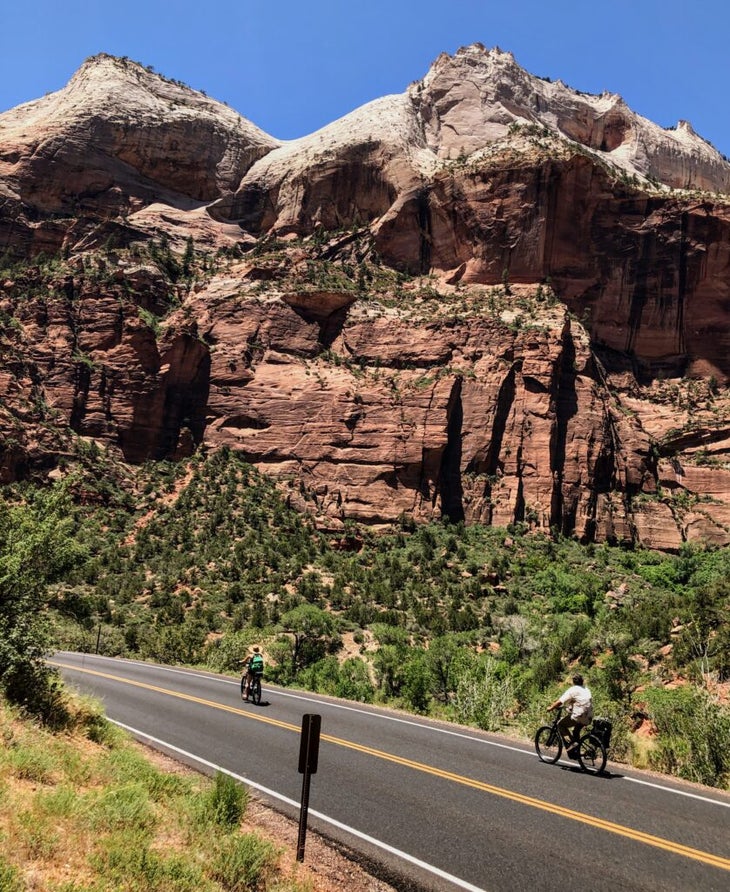
Environmental essayist Edward Abbey posited some prescient thoughts about the fate of Arches, where he was a ranger in the mid-50s, when it was still but a fledgling national monument. “No more cars in national parks. Let the people walk,” he wrote in Desert Solitaire.
Indeed, visit Arches—or any national park—in peak season and prepare to join a snake of slow-moving vehicles, inching from viewpoint to viewpoint. A car is usually the worst way to take in these sublime lands. The secret is to enter on two wheels, not four.
The best place to apply this tip is Zion, Utah’s most popular national park. Park your car in Springdale and rent a bike or e-bike at a gear shop in town (starting at $50/day; try Zion Cycles or Zion Peddler). You can also bring your own bike if you’re road-tripping. From Springdale, it’s a five-minute ride to the park’s main south entrance. Private vehicles aren’t allowed to drive through Zion Canyon during peak season (riding the shuttle is required), so riders get free reign. The only other road users you’ll have to contend with are the shuttle buses, which will wait for you to pull over to the shoulder so they can pass. Bring a bike lock to secure your bike at trailheads and viewpoints. The road is relatively flat, so the nine miles each way go by quickly, especially as you enjoy the wind in your hair through the canyon’s stoic walls in peace.
In Bryce, the move is to rent an e-bike from Bryce Canyon EZ Riders (starting at $40 for two hours), located at the Bryce Canyon City Airport, four miles from the park entrance. Then whiz along the gently undulating paved Bryce Canyon Shared Use Path that leads straight into the park. The path terminates at Inspiration Point, and while you could theoretically continue along Bryce’s scenic drive, I don’t recommend it due to heavy traffic and a narrow shoulder. You could also experience hoodoo country by mountain biking Thunder Mountain Trail (8.1 miles one-way; usually ridden as a downhill shuttle) in nearby Red Canyon—one of my favorite rides anywhere in Utah.
2. Take a Back Entrance Into the Park
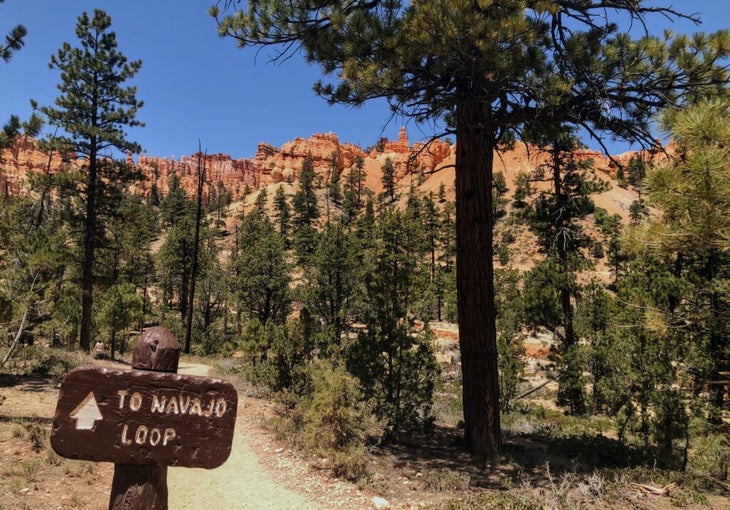
Did you know that some of Utah’s national parks have a back door? The best example is Bryce, where a little-known trail leads into the park’s amphitheater from the town of Tropic. You’ll wonder if you’ve made a mistake as you park your car in a random cul-de-sac and start up the sandy doubletrack of Tropic Trail (3.4 miles roundtrip). But soon Bryce’s legendary hoodoos—sedimentary spires formed by erosion—will come into view. In Bryce Amphitheater, Tropic Trail intersects with Navajo Loop Trail (1.3 miles round-trip), which you can take up to the rim. While you’ll contend with crowds as soon as you get off Tropic Trail, you won’t have to deal with lines at the park entrance or full parking lots up top. There’s also something magical about approaching the hoodoos from the solitude of this quiet trail.
Arches also has a back entrance, but it will take a 4WD high-clearance vehicle, navigation skills, and more time to find it. As you’re heading into Moab on Highway 191, take Klondike Bluffs Road to the Copper Ridge Safari Route and the Klondike Road Trail, which eventually leads to Tower Arch. In Zion, the back entrance is via canyoneering: a top-down adventure (permit required) through the Narrows.
Note that taking a back entrance to Bryce or Arches means you won’t be assessed the entrance fee, but I’d encourage you to make a donation to the park if you can—our national parks could use it right now.
3. Camp or Book a Room Inside the Park
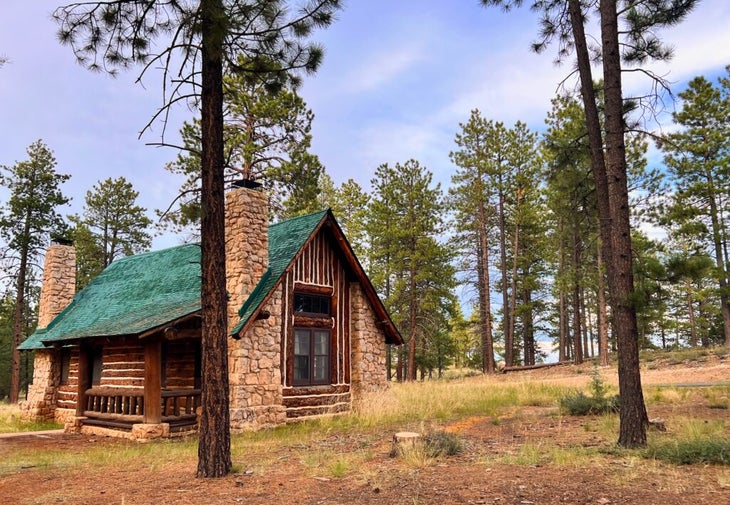
Camping or lodging inside a national park strategically positions you for uncrowded dawn, dusk, or even nighttime views and hikes. This does require advance planning, since reservations fill up fast. One of my favorite places to sleep (in a national park, or anywhere) is Devils Garden Campground in Arches, where scenic campsites back up to slickrock and you can hike right from your tent. Book up to six months in advance on www.recreation.gov ($25 per night) or roll up to a first-come, first-served site in the off-season (November through February). By camping at Devils Garden, I’ve had the chance to hike the quiet trail to Broken Arch at sunset, scramble over slickrock under a full moon, and wake up early enough to hike to Delicate Arch for the sunrise in the company of only a dozen or so other humans.
In Zion, I recommend a room or cabin at the historic lodge (starting at $188) over the campground, which feels a bit like camping in a municipal park, landscape-wise. The lodge has an onsite restaurant, trails just steps away, and over 120 rooms, including some suites and cabins. In Bryce, camp among towering pines at North Campground or Sunset Campground ($30 per night; book at www.recreation.gov). Or stay in the campy Lodge at Bryce Canyon (starting at $254) within spitting distance of Sunrise and Sunset Points. In Canyonlands, you can camp at Island in the Sky Campground ($15 per night; first come, first served) or the Needles Campground ($20 per night; reserve at www.recreation.gov).
Another strategy is to stay very close to the park. Check out some Hipcamp options nearby:
Find Hipcamp Sites Near Capitol Reef
Find Hipcamp Sites Near Canyonlands
Find Hipcamp Sites Near Arches
4. Pick a Less Popular Trail
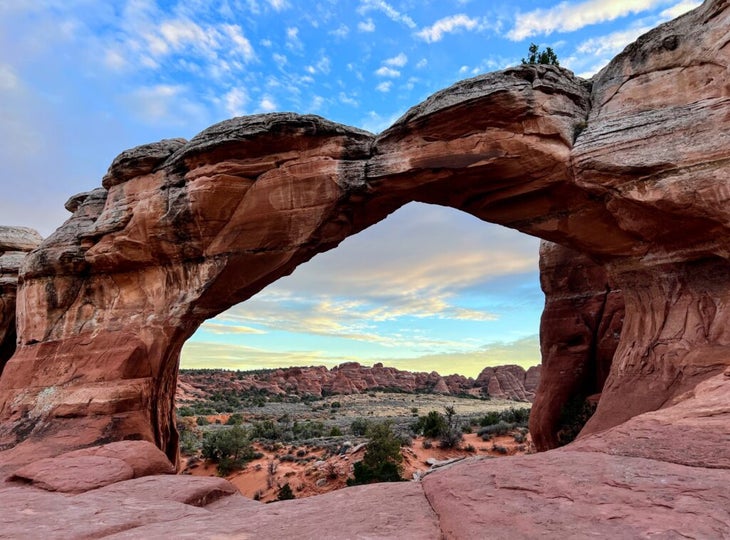
Didn’t snag that Zion Angels Landing permit? Sad about the bumper-to-bumper hiker situation on Queens Garden Trail in Bryce? There are plenty of trails in Utah’s national parks that weed out the tourists from the adventurers. And don’t let a crowded trailhead fool you—hike for more than 15 minutes and trail traffic usually thins if not disappears.
A few lesser-known trails I’d recommend:
Arches
Starting from the Devils Garden Campground, Broken Arch Trail (1-mile roundtrip) leads to an arch that isn’t quite broken yet, but probably will be soon. It’s a very scenic spot to watch the sunset. Or try Tower Arch Trail (3.4 miles roundtrip), which takes you to a stout, wide arch near a tower.
Bryce
Actually a 23-mile one-way backpacking trail that requires a permit for overnight stays, Under-the-Rim Trail is also great for shorter out-and-back day trips (no permit required). Hike as far as you like across the varied terrain and over fun features.
Canyonlands
Syncline Loop Trail (8 mile loop) circumvents Upheaval Dome, a mysterious crater the origins of which continue to puzzle scientists. If you want to duck into the crater itself, you’ll add an extra three miles total.
Capitol Reef
Catch incredible views of the Hickman Natural Bridge, the cliffs of Capitol Reef, and the Henry Mountains as you wander up sandstone hills past volcanic rock on Rim Overlook Trail (4.6 round-trip), off Highway 24. The Rim Overlook Trail is not mapped on Trailforks, but I’ve included a map of the Hickman Bridge Trail, which starts from the same trailhead and splits off after less than a mile.
Zion
Located in the Kolob Canyons section of Zion, Taylor Creek Trail (5 miles round-trip) ends at an awe-inducing rock alcove with two arches. You’ll pass historic cabins and wildflowers aplenty along the way. Below is a partial map of the trail that follows the South Fork of Taylor Creek.
5. Explore a National Park’s Backcountry on a Rugged Drive
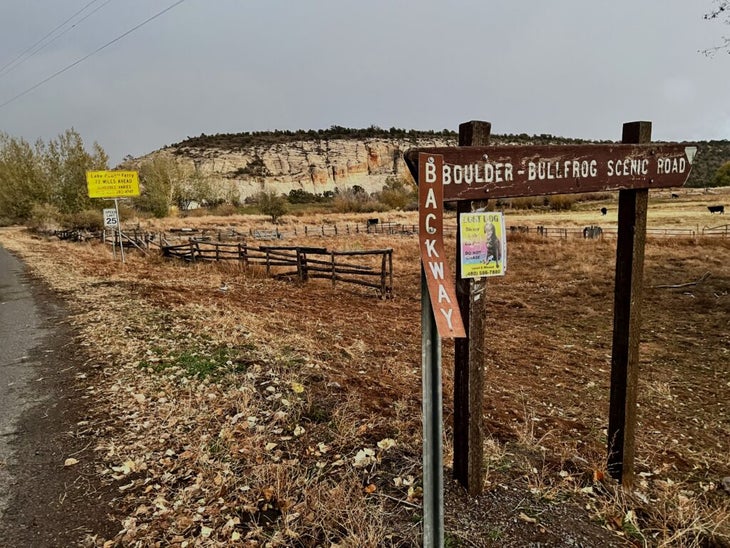
The main sections of each of Utah’s national parks get all the hype. But most parks have a backcountry that can be explored with a four-wheel-drive, high-clearance vehicle, a good map, and some grit. A great case in point: Capitol Reef’s “Loop the Fold” drive, which crosses the Waterpocket Fold, the park’s defining feature. This literal wrinkle in geologic time stretches nearly 100 miles across southern Utah, past incredible hikes and alluring slot canyons.
To take the “Loop the Fold” drive (a 125-mile one-way, 4-6-hour adventure), head east on Highway 24 from the Capitol Reef Visitor Center for nine miles. Turn right on Notom-Bullfrog Road and continue for 33 miles. Turn right on Burr Trail Road, which will take you up steep switchbacks that crest the Waterpocket Fold. After 36 miles on Burr Trail, you’ll end up in the town of Boulder. You could stay here and explore Grand Staircase-Escalante National Monument, or return to Capitol Reef via Highway 12.
Meanwhile, to the north in Canyonlands, the park’s Maze District entices explorers at heart to get a little lost—but bring a map, compass, and satellite radio so you don’t actually get lost. The intrepid can try the Maze’s Flint Trail, a 4WD-road that accesses hiking to mind-bending rock formations and dispersed camping.
And in Zion, take a drive on Kolob Terrace Road, where you can access good hiking, the panoramic views of Lava Point, and canyoneering up Orderville Canyon and via the iconic Subway route.
6. Check Out a Lesser-Known Section of the Park
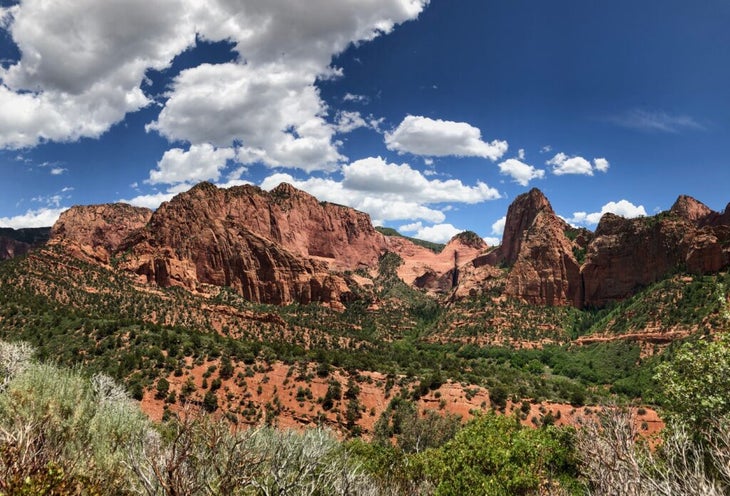
The most famous sights and features of any given national park constitute only a small fraction of the territory—particularly in the cases of Zion, Capitol Reef, and Canyonlands.
In Zion, skip the crowded main canyon and east entrance to check out Kolob Canyons, or the hiking and canyoneering off Kolob Terrace Road. In Capitol Reef, instead of limiting yourself to Grand Wash or Capitol Gorge off the main scenic drive, check out the trails off Notom-Bullfrog Road, off Highway 24, or in Cathedral Valley. And in Canyonlands, skip Island in the Sky, and plan a hike in the Needles District, the Maze, or the non-contiguous Horseshoe Canyon Unit with its magnificent rock art.
In Arches, you can snag a hiking permit for the Fiery Furnace ($10 per person). If you get lost easily, there are also ranger-led tours through this labyrinthine area (which also must be booked in advance). You can easily dedicate a few hours or a whole day wandering through this red rock maze.
7. Be a Night Owl
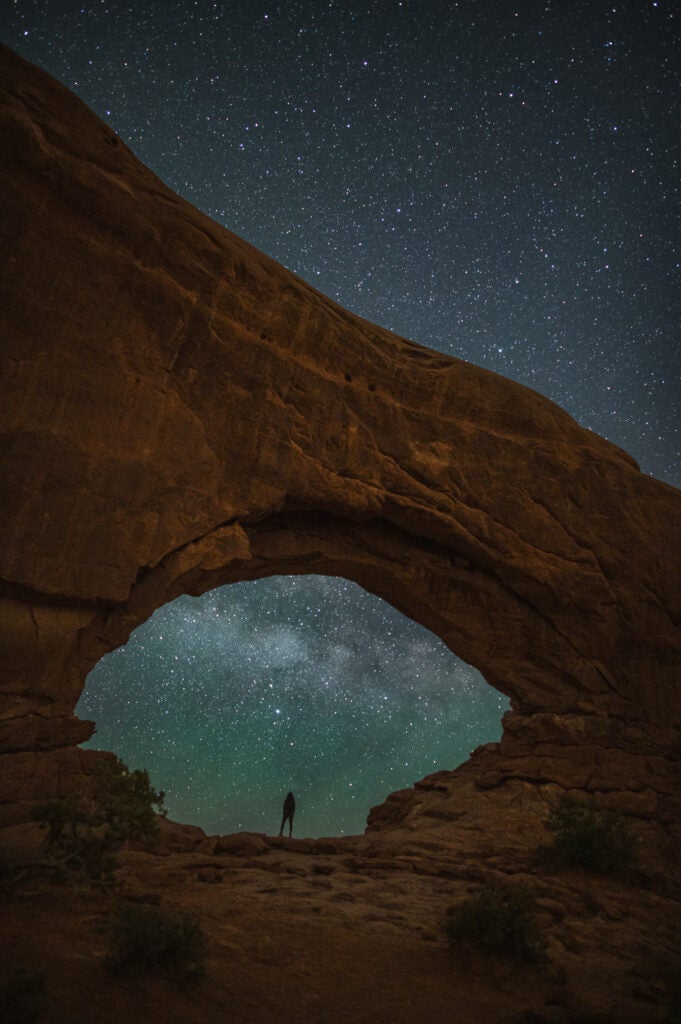
Utah’s national parks are open 24 hours a day, 365 days a year. You don’t need to go on a weekend in July between the hours of 8am and 5pm. This is, as you might expect, the absolute worst time to go.
So get yourself a good headlamp (and extra batteries) and venture into the park well before the sun rises, after it sets, or at night. The best national park experience I’ve ever had was stargazing in Arches at 1am. Instead of thousands of tourists around, there were thousands of stars and the Milky Way above. If you’re not comfortable hiking at night, you can simply drive up to a viewpoint, set out some chairs and stargaze or catch a meteor shower (the Perseids peak mid-August every summer).
In Bryce, book a night sky tour ($50) with the Dark Ranger Observatory, which runs star parties year-round (times vary depending on season; reservations required).
Of course, finding the motivation to hang out inside a national park by dark will be much easier if you’re staying within the park, so this advice pairs well with tip number three above).
8. Embrace Desert in Winter
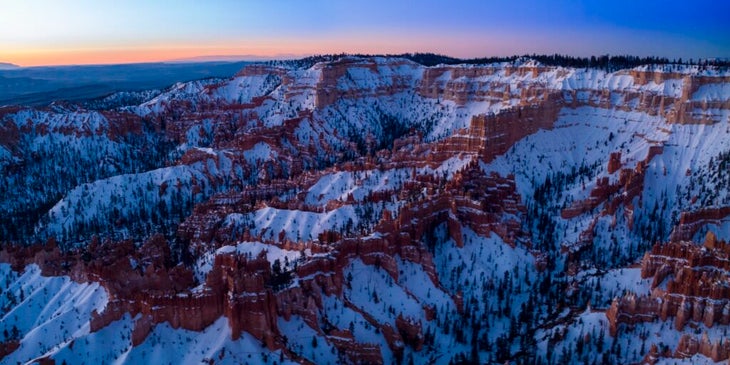
A (literally) hot take: Utah’s national parks are better in winter than in summer. And this is coming from me, a self-proclaimed lizard who will take all the sun she can get. This really shouldn’t be a hot take, because if you’ve ever been on a sweltering shuttle bus in Zion or a shadeless trail in Capitol Reef in July, then you know full well that a summer desert trip is generally a no-go (river trips are the exception).
While spring and fall hold the most comfortable temperatures in Utah’s desert landscapes, they also draw large crowds (these are the tourists who understand that summer in the desert is a bad idea). So is winter the best time to venture to Utah’s Mighty Five? It just might be.
Worst case scenario: Snow falls in southern Utah and you find yourself on snowy roads and snow-packed trails. Even still, as long as you and your vehicle come prepared, you’ll have the place to yourself. Plus, the red rock is stunning in the snow. Of all the parks, Bryce notoriously shines in winter—there is perhaps no sight more bewitching than the park’s amphitheater of lifelike hoodoos cloaked in fresh powder. Bryce even offers a ranger-led snowshoe tour as well as cross-country ski trails.
Best case scenario (the likelihood of which increases year over year as our planet unfortunately warms): You’ll get a winter’s day in the 60s with a strong sun. The perfect temps, and an empty park.
9. Find a Utah National Park Dupe Destination

The concept of dupe travel is to avoid the fuss of the world’s most sought-after destinations (e.g., Paris, Jackson Hole, Zion), while reaping all the benefits of what that destination offers by choosing a very similar, less-hyped place to visit. There are many opportunities to do this when it comes to Utah’s national parks by seeking out national monuments, state parks, and other public lands that offer similar scenery and adventures. Do you really think they would put all of Utah’s arches within a 119-square-mile radius?
Here are some dupe destination recommendations for Utah’s parks:
- Arches: National Bridges National Monument, in Southeastern Utah within Bears Ears National Monument. These are bridges, not arches, but I swear you’ll never know the difference. You can hike from bridge to bridge on a 12-mile loop trail in solitude. There’s also great camping here.
- Bryce: Cedar Breaks National Monument (closed in winter) is filled with hoodoos at altitude. Red Canyon, which you’ll most likely drive through to reach Bryce, is also hoodoo country. Mountain bike, hike, or take a horseback ride on Thunder Mountain Trail.
- Canyonlands: You don’t really need a dupe destination for Canyonlands, since the park is so massive you can easily explore its myriad canyons without crowds. But nearby Deadhorse Point State Park offers similarly magnificent views and great mountain biking.
- Capitol Reef: Similar to Canyonlands, it’s easy to escape the crowds in Capitol Reef. But you’ll find similar terrain and canyons across neighboring Grand Staircase-Escalante National Monument.
- Zion: Snow Canyon State Park near St. George has comparable canyon country, with great hiking and rock climbing.
10. Book a Guided Experience
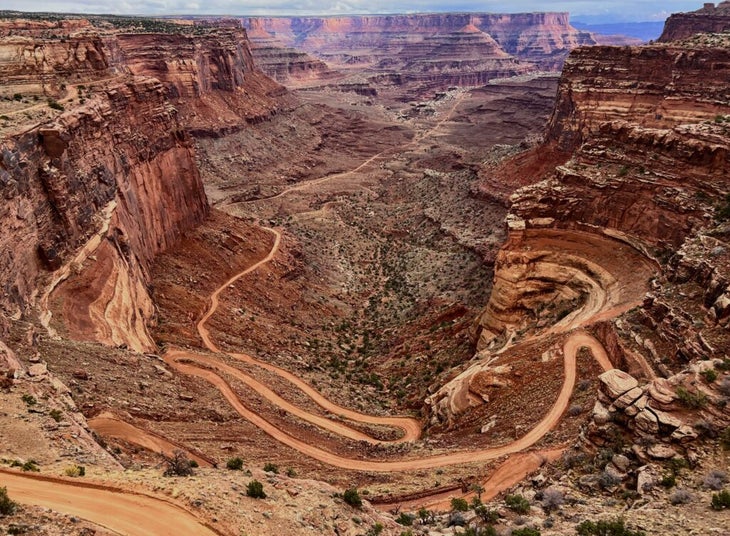
Even if you’re guide-averse, booking a guide often unlocks great access or novel experiences. Plus, if you lack the gear or necessary know-how, a guide allows you to go on a more technical adventure than you otherwise might on your own. A few ideas:
- While Zion limits the areas where guides can operate within the main canyon, you can book a guided day trip up the Narrows (from $150/person) or through one of the canyons outside Zion Canyon.
- Take a horseback ride through Bryce Canyon (book through Ruby’s Inn; starting at $90 per person, per 1.5-hour ride)
- Set your alarm for a midnight photography tour at Arches through Moab Dark Sky Tours (starting at $99 per person).
- Book a bikepacking trip through Canyonlands on White Rim Road (starting at $985 per person; many outfitters like Rim Tours offer shuttles or fully guided bikepacking trips).
- Go on a guided river trip (or find a friend with a boat and a permit) on the Green or Colorado Rivers that flow through Canyonlands (starting at $999 per person per two-day trip).
11. Become a Connoisseur of Odd Hours
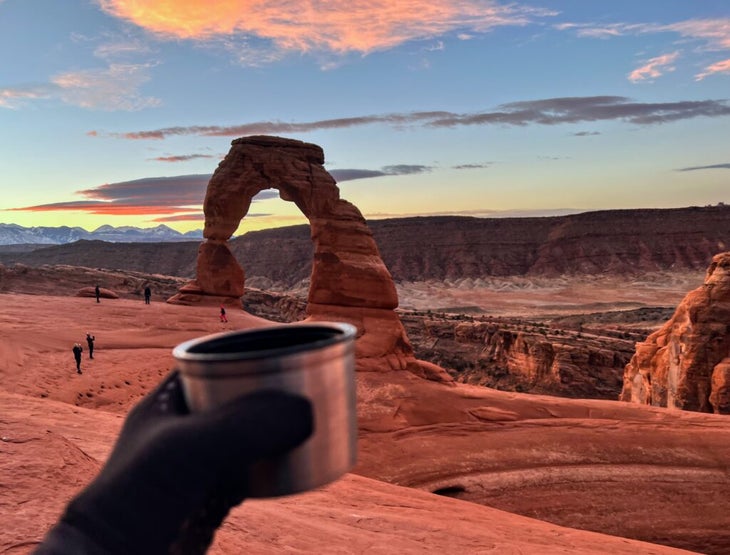
Many of the tips above help you avoid crowds by avoiding the most crowded areas of Utah’s national parks. But I acknowledge that sometimes, these areas are crowded for a reason. So if you have your heart set on standing beneath Delicate Arch, watching the hoodoos glow from Sunset Point, or taking in the harrowing 360-degree views of Angels Landing, the important thing is to get your timing right.
As I stated earlier, average tourist behavior does not reflect the fact that these parks are open 100% of the time. So whether you go in the off season (aka winter, tip number eight), explore by night (see tip number seven), or go on a weekday, do what you can to visit when most people won’t. And whatever you do, don’t hit the main circuits of any of Utah’s national parks on a holiday weekend.
Climbing’s Editor-in-Chief Maya Silver has lived in Utah for nearly a decade. She’s been exploring its national parks since she first waded through Zion’s Narrows at age 10. Since then, Utah’s national parks have become a lot more popular, which is why she’s focused her four Moon travel guides on how to avoid the crowds. This summer, she’ll be exploring the San Rafael Swell and Utahraptor State Park—Utah’s newest state park—with her two kiddos.
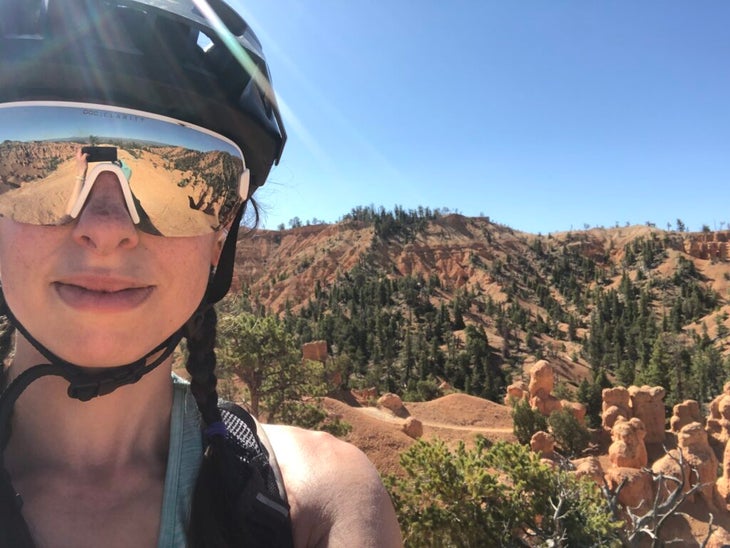
The post Avoid Crowds in Utah’s National Parks With These Insider Secrets appeared first on Outside Online.



